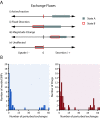iAB-RBC-283: A proteomically derived knowledge-base of erythrocyte metabolism that can be used to simulate its physiological and patho-physiological states
- PMID: 21749716
- PMCID: PMC3158119
- DOI: 10.1186/1752-0509-5-110
iAB-RBC-283: A proteomically derived knowledge-base of erythrocyte metabolism that can be used to simulate its physiological and patho-physiological states
Abstract
Background: The development of high-throughput technologies capable of whole cell measurements of genes, proteins, and metabolites has led to the emergence of systems biology. Integrated analysis of the resulting omic data sets has proved to be hard to achieve. Metabolic network reconstructions enable complex relationships amongst molecular components to be represented formally in a biologically relevant manner while respecting physical constraints. In silico models derived from such reconstructions can then be queried or interrogated through mathematical simulations. Proteomic profiling studies of the mature human erythrocyte have shown more proteins present related to metabolic function than previously thought; however the significance and the causal consequences of these findings have not been explored.
Results: Erythrocyte proteomic data was used to reconstruct the most expansive description of erythrocyte metabolism to date, following extensive manual curation, assessment of the literature, and functional testing. The reconstruction contains 281 enzymes representing functions from glycolysis to cofactor and amino acid metabolism. Such a comprehensive view of erythrocyte metabolism implicates the erythrocyte as a potential biomarker for different diseases as well as a 'cell-based' drug-screening tool. The analysis shows that 94 erythrocyte enzymes are implicated in morbid single nucleotide polymorphisms, representing 142 pathologies. In addition, over 230 FDA-approved and experimental pharmaceuticals have enzymatic targets in the erythrocyte.
Conclusion: The advancement of proteomic technologies and increased generation of high-throughput proteomic data have created the need for a means to analyze these data in a coherent manner. Network reconstructions provide a systematic means to integrate and analyze proteomic data in a biologically meaning manner. Analysis of the red cell proteome has revealed an unexpected level of complexity in the functional capabilities of human erythrocyte metabolism.
Figures





References
Publication types
MeSH terms
Substances
Grants and funding
LinkOut - more resources
Full Text Sources
Molecular Biology Databases

